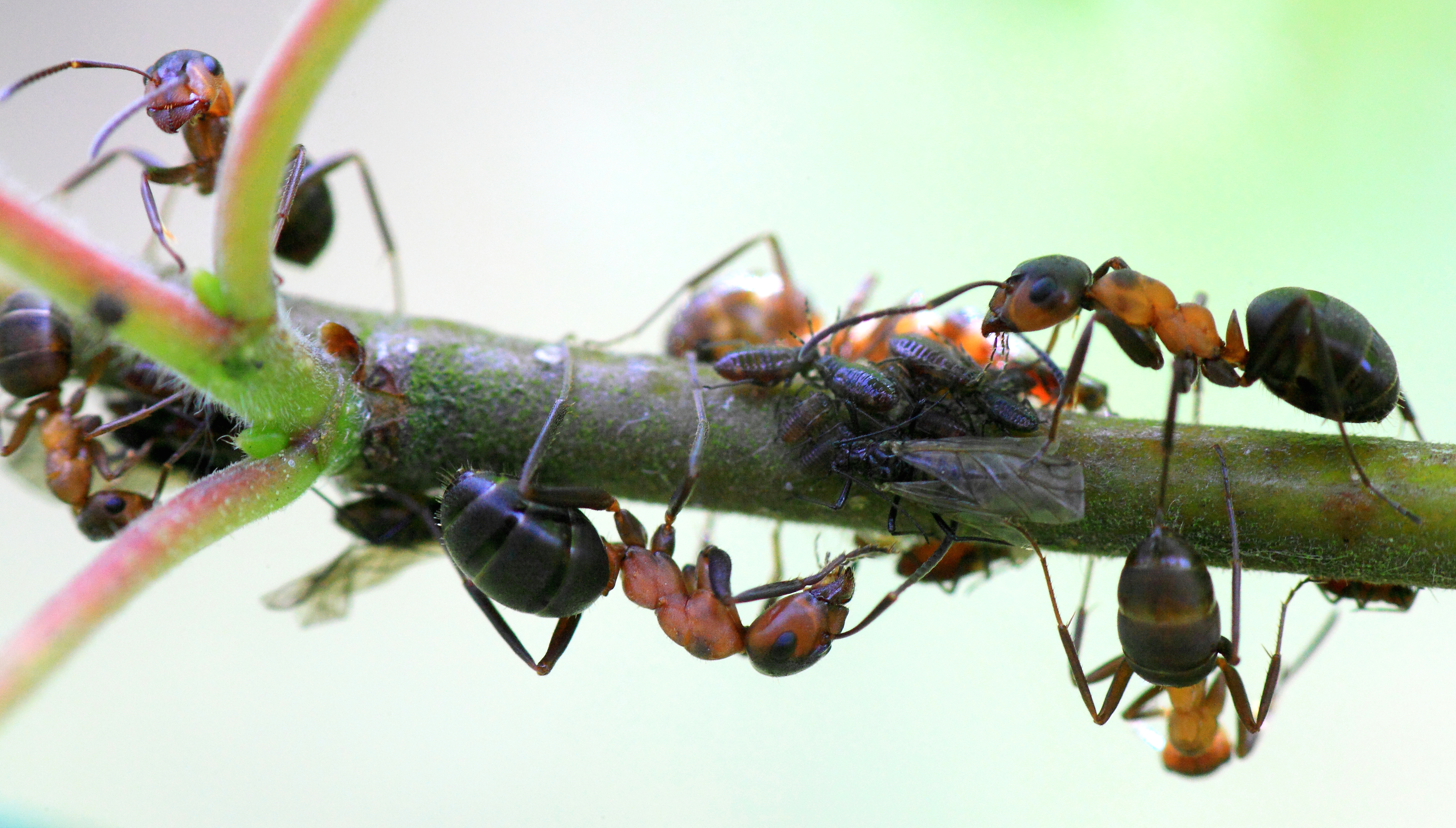'They are inclined to bite and spray acid to protect territory': Meet the feisty red wood ant


If you go down to the woods today, you’re sure of a big surprise if you sit on one of those comfortable-looking mounds on the south-facing edge of a sunlit glade. It seems an ideal place for you and your teddy bears to picnic. However, the spot is already taken. Compounded of leaf litter, pine needles and forest debris, these mounds are multi-storey homes to wood ants. The largest heap may rise 6ft in height and contain interconnected colonies seething with as many as half a million workers and 100 queens.
Southern or red wood ants are the largest of the 51 native ant species in Britain, workers measuring one-third of an inch and the queens almost half an inch. They are inclined to bite and spray acid to protect territory and why not? They outnumber you and your teddy bears — and they are not residents with which to argue. Move elsewhere, but still take care, for as many as 500 of them may be found in one square yard of woodland floor as they forage for prey caterpillars, spiders, beetles, dead invertebrates and the aphids that offer them honeydew.
For reasons unknown, they are also called horse ants, but these are not ‘our’ wood ants. Native to Eurasia, they range from Scandinavia to southern Siberia, from Spain to Asia Minor, and North America claims them, too. The defensive spray, formic acid, is common to many ant species (some 13,000 worldwide), but the reds were the contributors when it was first distilled in 1671 by English parson-naturalist John Ray, who heated bodies in a glass flask. Their acid is classed as methanoic, a natural carboxylic acid also found in bee stings and nettles.
Entomologists identify different species. There’s even a north/south divide between our principal strains, with the southern red (Formica rufa) widely distributed across the South and the northern or Scottish (F. aquilonia) thriving further up the country, although they overlap midway. They have rarer cousins, too. The hairy wood ant (F. lugubris) is found in southern counties and up into Derbyshire, the blood-red (F. sanguinea) is widely scattered throughout the country, the narrow-headed (F. exsecta) is confined to Devon and two areas in Scotland, the shining guest ant (Formicoxenus nitidulus) is seen among southern red nests and a related F. pratensis is found on Jersey and Guernsey.
Five things you (probably) don't know about ants
- Formic acid has been used in Sweden to treat gout and rheumatism
- Schnapps flavoured with ants was once popular there in the 18th century and home brewers are said to favour it still
- In Scotland, ant eggs and onion juice treated deafness and the Cornish believed that ants were fairies in a pre-development stage
- Statisticians have decided that there are more ants on the planet than any other creature and that their combined weight is greater than that of humanity.
- Meanwhile, wood ants have a larger brain than any other insect, with 25,000 cells. Their social structure and lifestyle would seem to affirm it
We have a teeming wood-ant world and one to be respected. Ants have a robust resistance to radiation and those that live well below ground would inherit a surface where even the oft-quoted cockroach might succumb. Wood ants are safe below those tall mounds as their tunnels and chambers plunge to a similar depth. Meanwhile, they play a key role in ecology and the food chain, controlling invertebrate pests, concentrating minerals, distributing seeds and providing food for badgers, pine martens, green woodpeckers and capercaillie.
From November until spring, the ants hibernate, their mound a clinical haven as its pine-resin elements fight bacteria and fungi. The colony wakes when temperatures reach 25 ̊C–30 ̊C — country folk say you can hear the awakening — and tunnel entrances are opened and closed thereafter to maintain optimum temperature and humidity. As worker ants set about foraging and maintenance, eggs hatch in May and virgin queens and young males take to the air to mate, the boys flying first. After fulfilling their duty, they die. A fertilised young queen may return to her home nest, where workers will create a satellite mound, or she may descend on the mound of a smaller species, killing or ejecting the resident queen and enrolling its workers to serve her imminent brood.
As the slave workers die off, the nest becomes a pure wood-ant colony. Workers have a life span of 60 days, but a queen may rule for 15 years or more.
Exquisite houses, the beauty of Nature, and how to get the most from your life, straight to your inbox.
After some decades in hard news and motoring from a Wensleydale weekly to Fleet Street and sundry magazines and a bit of BBC, Ian Morton directed his full attention to the countryside where his origin and main interests always lay, including a Suffolk hobby farm. A lifelong game shot, wildfowler and stalker, he has contributed to Shooting Times, The Field and especially to Country Life, writing about a range of subjects.
